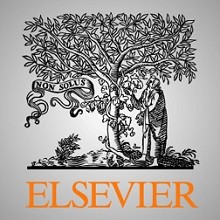
تاثیر ترس و اضطراب در گذر سریعتر زمان
Abstract
1- Introduction
2- Procedure
3- Experiment specific methods
4- Results
5- Discussion
6- Conclusion
References
Abstract
People often say that during unpleasant events, e.g. traumatic incidents such as car accidents, time slows down (i.e. time is overestimated). However aversive events can elicit at least two dissociable subtypes of reactions: fear (transient and relating to an imminent event) and anxiety (diffuse and relating to an unpredictable event). We hypothesised that anxiety might have an opposite effect on time perception compared to fear. To test this we combined a robust anxiety manipulation (threat-of-shock) with a widely used timing task in which participants judged whether the duration of a stimulus was long or short. In line with our hypothesis, across three experiments (with varying stimulus timings and shock levels), participants significantly underestimated time under inducted anxiety, as indicated by a rightward shift of the psychophysical function (meta-analytic effect size: d = 0.68, 95% confidence interval: 0.42-0.94). In two further studies, we were unable to replicate previous findings that fear leads to time overestimation, after adapting our temporal cognition task, which suggests a dissociation between fear and anxiety on how they affect time perception. Our results suggest that experimentally inducing anxiety leads to underestimating the duration of temporal intervals, which might be a starting point in explaining different subjective experiences of disorders related to fear (e.g. post-traumatic stress disorder) and anxiety (e.g. generalised anxiety disorder).
Introduction
The emotional valence of experience is thought to distort our subjective sense of time (Droit-Volet & Meck, 2007). Everyday experience and experimental evidence suggests that “time flies when having fun” (Gable & Poole, 2012; Simen & Matell, 2016), but slows down during unpleasant experiences (Fayolle, Gil, & Droit-Volet, 2015; Stetson, Fiesta, & Eagleman, 2007; Tipples, 2008). The latter seems to occur in situations such as car accidents or free falls (Arstila, 2012; Stetson et al., 2007). However, it might not be the case that time slows down during all kinds of aversive events. For example, time also seems to fly when one is in the rather anxiogenic state of having to work to a deadline just hours away. One explanation for this discrepancy is that in the above examples during which time slows down (car accidents and well-controlled free falls: (Arstila, 2012; Stetson et al., 2007), it is fear that is induced (an acute aversive state elicited by immediate and certain threat), which is distinct from anxiety (a more prolonged aversive state elicited by an uncertain threat that may occur in the future; for further discussion of the distinction between fear anxiety see Davis, Walker, Miles, & Grillon, 2010; Kierkegaard, 1957; Tovote, Fadok, & Lüthi, 2015. The hypothesis that the passage of time slows down during states of fear (i.e. time is overestimated) is supported by studies using fear-provoking pictures (Grommet et al., 2011; Tipples, 2008, 2011), looming stimuli, which are considered intrinsic threat cues, (van Wassenhove, Wittmann, Craig, Bud, & Paulus, 2011), unpleasant noises (Droit-Volet, Mermillod, Cocenas-Silva, & Gil, 2010) and electrical shocks (Fayolle et al., 2015). An unresolved question, however, is whether the effect of anxiety on our perception of time is distinct from that of fear. One study that used electrical shocks hinted that this might be the case, though given that a probabilistic fear conditioning paradigm was used, it is not clear whether fear or anxiety was induced in this experiment (Lake, Meck, & LaBar, 2016). During fear-inducing events (e.g. a car crash) attention is focused on timing the present. This could be adaptive: for example, when a car is speeding towards you, keeping track of time is critical, as taking evasive action at the right moment may allow you to avoid the collision.
